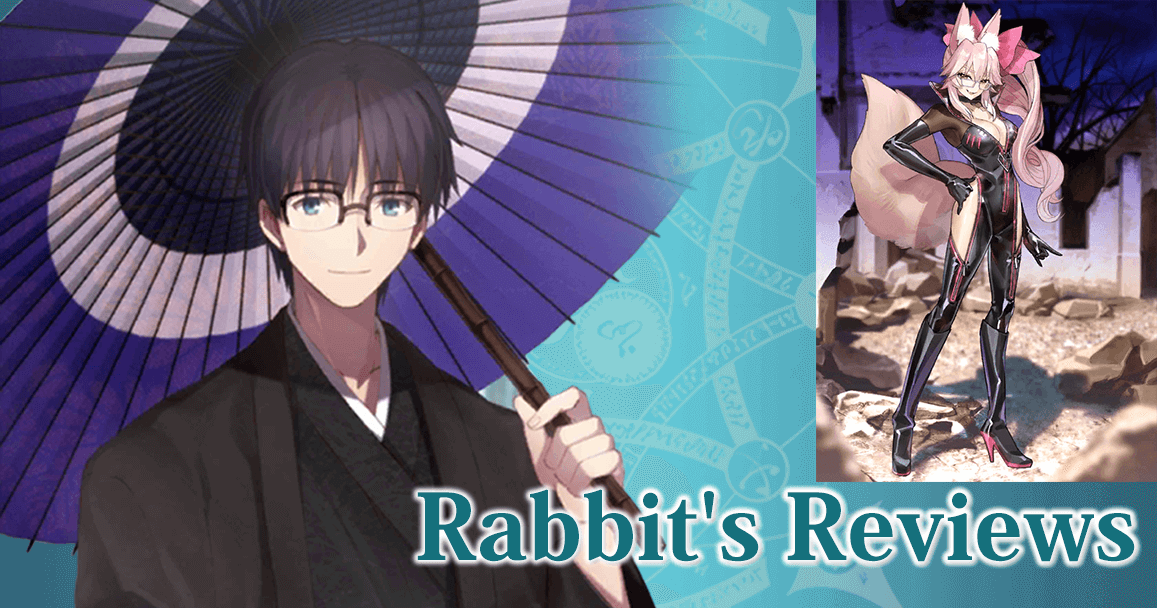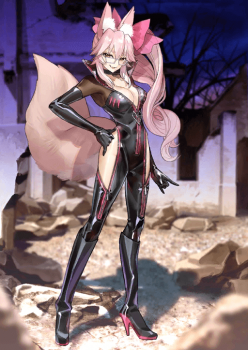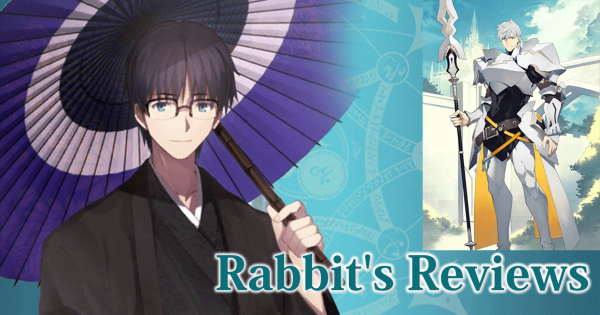
|
“Buster Is Saved!!!”
…would be the clickbait-style title for this review. That or, say, “You’ll Never Believe How Many Tails This Fox Has!” But something of that nature feels appropriate here, given our Sixth Anniversary Servant is the ruthless capitalist Tamamovitch Koyanskaya, showing up to steal Merlin’s (or Himiko’s, if you’re me and have strange opinions sometimes) title of best Buster support.
Koyanskaya is an interesting Servant for several reasons. Unlike Castoria before her, Koyanskaya doesn’t really raise the overall power ceiling in FGO. Barring a surprise from Oberon (more on that later), Koyanskaya’s set of tools bring top-end Buster Servants up into competition with Arts and Quick for fastplay and farming, but Koyanskaya teams still have a set of key disadvantages relative to Arts. She has no sustain tools, for one thing, and while she has the fabled 50% battery/50% Buster buff skill combo, she actually has no direct and universal NP damage buffs outside of that, which means her stated damage boostage (against non-Man-attribute enemies) is more in-line with Nightingale and Jinako than with Skadi and Castoria. She does provide excellent damage buffs against Man-attribute enemies specifically, so her buffs are on-average about on-par with a typical top-support, but 50%-or-100% is less valuable overall than always-80%, at least on a Servant you want to be able to bring anywhere.
What sets Koyanskaya apart is that her defining supportive feature is not batteries, damage buffs, NP gain buffs, or even crit tools (although she does have all of those things in different forms). What makes Koyanskaya work is the fact that she has a targeted 2-turn cooldown reduction skill. This means double Koyanskaya teams can allow a damage-dealer to use batteries twice and double-stack their innate buffs. As a result of this, where Arts and Quick Servants are sorted first and foremost by their NP gain stats—“but can they loop” is a common refrain—Buster Servants going forward will likely be differentiated according to how well their skills play with Koyanskaya’s skill-stacking nonsense. Servants like Arjuna Alter, with short-CD batteries and great sustained damage buffs, come out ahead, while Servants like Summer BB, with cooldowns too long to realistically loop within 3-turns, are left behind.
All of this, notably, assumes double Koyanskaya. She’s rather more dependent on getting to run doubles than most other supports, as her power scales exponentially rather than linearly with more copies of her. Double Koyanskaya effectively gets you a full extra set of skills to use, in the form of whatever your DPS brings. Koyanskaya has a lot of cool stuff that’s not contingent on having two of her, but she’s a lot less impressive than her direct competition in single-support contexts.
So, what this much-longer-than-is-normal intro is driving at is that Koyanskaya is a weird Servant. She’s something of a tactical solution to Buster’s problems, giving a handful of Buster Servants ways to keep up with Arts and Quick without drastically changing the balance of the game as a whole. She also requires a completely different style of thinking than more traditional supports, and the shape of Koyanskaya setups is going to vary depending on the DPS’s kit—Koyanskaya teams aren’t one-size-fits-all like, say, Castoria teams are. She’s also somewhat more dependent on having access to other battery supports than Castoria and Skadi are, although this is mitigated somewhat by everyone having the opportunity to snag Waver for free.
Where, exactly, Buster will land is still somewhat up in the air. We’ve only had Koyanskaya for a few days, and folks are still uncovering different ways the batteries can add up, and Oberon’s 70% batteries will also likely change the game at least a little, if not a lot. Koyanskaya may not be the support Buster wanted, but she probably is the support Buster needed. In sum…
Buster is Saved(?)
| Base Atk | 1,795 | Base HP | 1,918 |
|---|---|---|---|
| Max Atk | 11,616 | Max HP | 13,081 |
| Grail Atk | 12,715 | Grail HP | 14,331 |
Increase your Quick Card effectiveness by 8%.
Increase your Critical Strength by 12%.
Increase your Critical Strength by 6%
Increase your Mental Debuff Resist by 6%.
Increase your Death Resist by 6%.
Increase own Arts Card effectiveness by 10%.
Increase own Critical Star Drop Rate by 10%.
Increase own NP Strength by 20%.
| Card Hits |  4 4 |
 4 4 |
 3 3 |
 5 5 |
 8
8
|
|---|---|---|---|---|---|
| Per Hit | 0.76% | 0.76% | 0.76% | 0.76% | 0.76% |
 |
NP per Hit (%) | 0.76% | ||||||
|---|---|---|---|---|---|---|---|---|
| NP when Attacked (%) | 4% | |||||||
 |
Star Absorption | 102 |
|---|---|---|
| Star Generation per Hit | 25.5% |
This is the longest review I’ve written to date, with close to double the word count of Castoria’s review, which is perhaps the best testament I can give to the sheer complexity of what Koyanskaya brings to the game. She’s a great addition to FGO, I think—a tactical fix for Buster’s former failings who requires a lot of creativity to use to maximum potential. She’s an extremely powerful Support, and she enables all kinds of things that were impossible until now, but she’s still solidly below Castoria in terms of the power level of what she enables.
Even in hypothetical Melusine-and-Oberon omnifarming setups, Koyanskaya necessitates using the plugsuit, which Arts won’t always need. Around the time Castoria released, I mentioned the concept of “best-in-context,” which is a Systems Design idea that more or less means good balancing lets everything have a situation in which it’s the best option available. Koyanskaya’s addition gives Buster a set of contexts in which it’s best—specifically, 90+ nodes Buster can omnifarm that Arts can’t farm faster. Koyanskaya’s addition doesn’t change the fact that Arts setups are silly powerful and can do basically everything, but it does mean that certain Buster teams can do those things easier, if a little slower. Arts is still better overall, but there are real reasons to use Buster that range from being able to 6-drop difficult 90+ nodes to not needing to worry about digging through your box to find just the right Servants to swing a 3-turn clear.
The really cool thing about this is that, while Buster’s value case essentially amounts to “lets you not think about farming,” actually finding the teams and setups that do that involves a fair bit of math and creativity. Where the math for Arts farming generally lives in crafting a team for a specific node, the math for Buster farming lives in examining the skillsets of your own Servants and building general-purpose teams around them. It’s a nice dichotomy.
Amusingly, this puts Quick back on the bottom of the heap as card types go—but it’s not like Quick is suddenly bad now. All three card types can now do the same sorts of things, in that they all have ways to loop, to farm, to crit things to death, and to stall, but all three card types approach each of these in very different ways. It’s the healthiest balance we’ve seen in the game’s lifespan, I think. Quick is the least effective in this environment, but not drastically so, and we have enough supports that work across card-types that hybrid-sorta teams are very much workable. When you factor in all the quality of life changes from the 6th Anniversary, it’s a good time to be playing FGO.
Overall: 10/10
Single-Target DPS: 5/10
AoE DPS: 7/10
Survivability: 2/10
Offensive Utility: 10/10
Defensive Utility: 3/10
Farming Usefulness: 10/10
Metal… Gear?: 10/10
































